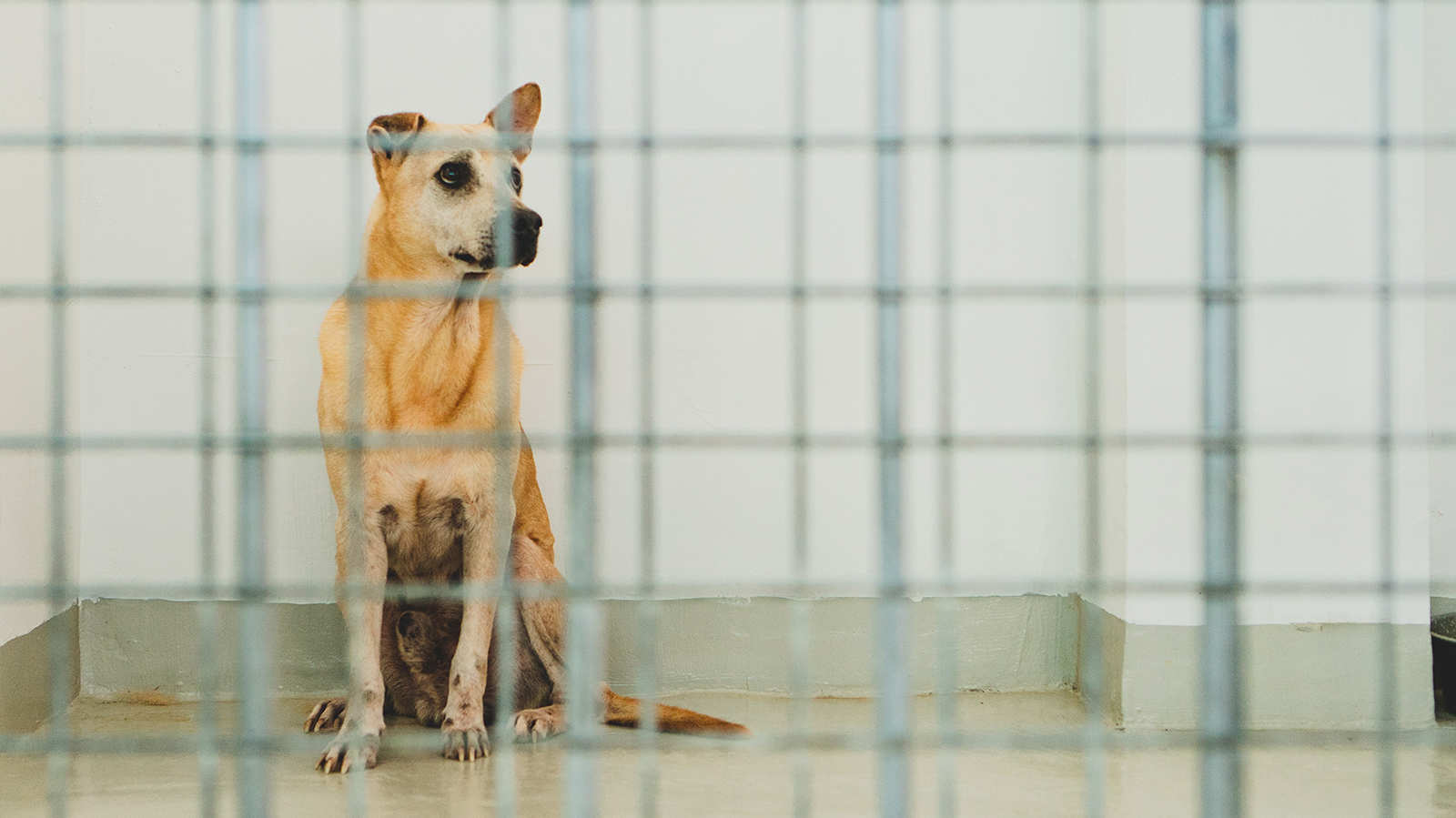It was by no means easy – the mass migration earlier this year of thousands of animals when animal welfare groups from various shelters in Pasir Ris, Loyang, Seletar and Lim Chu Kang moved to the new Animal Lodge at Sungei Tengah.
The new complex, which will house some 7,000 animals, is a great place for animal aficionados to congregate, and anyone interested in a new pet won’t have to travel from store to store in search of a specific breed or type of temperament.
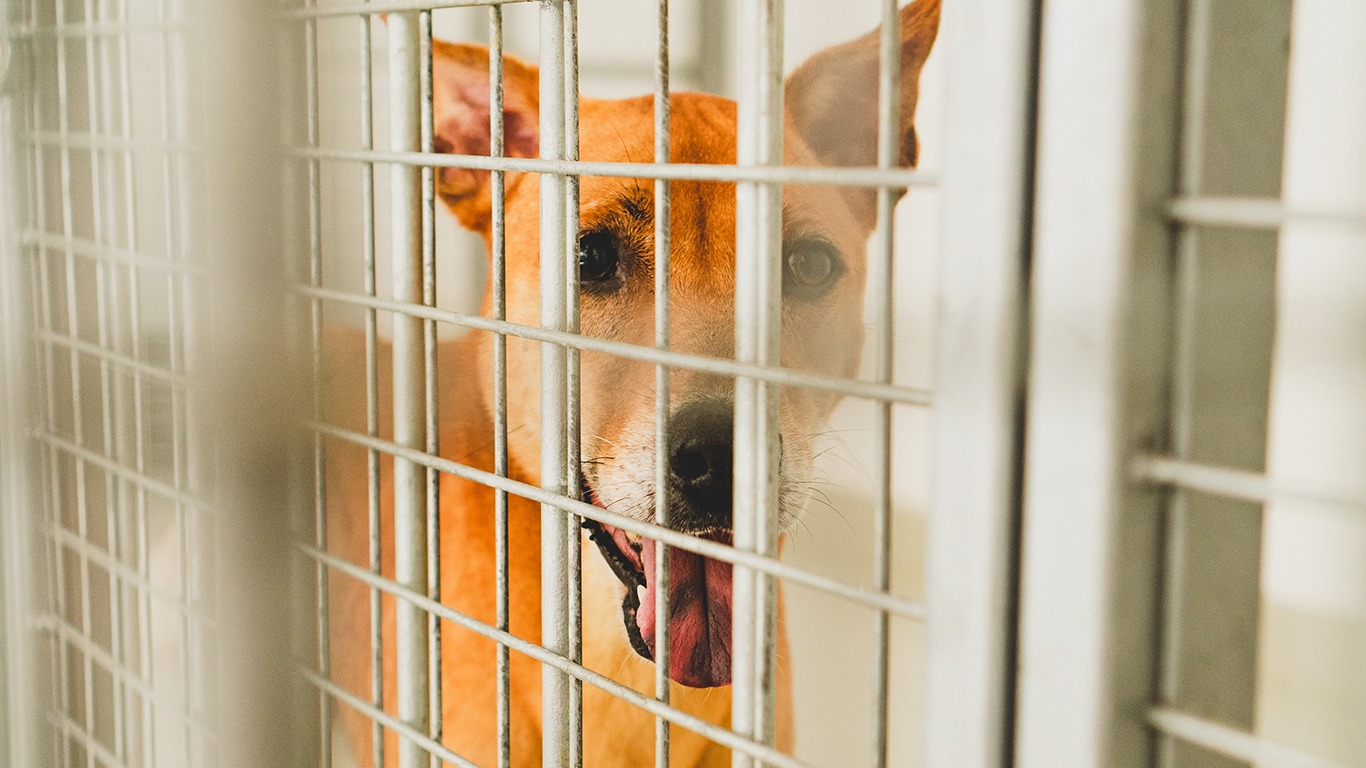
And it is great that with this dedicated facility for shelter animals, welfare groups no longer have to move locations frequently.
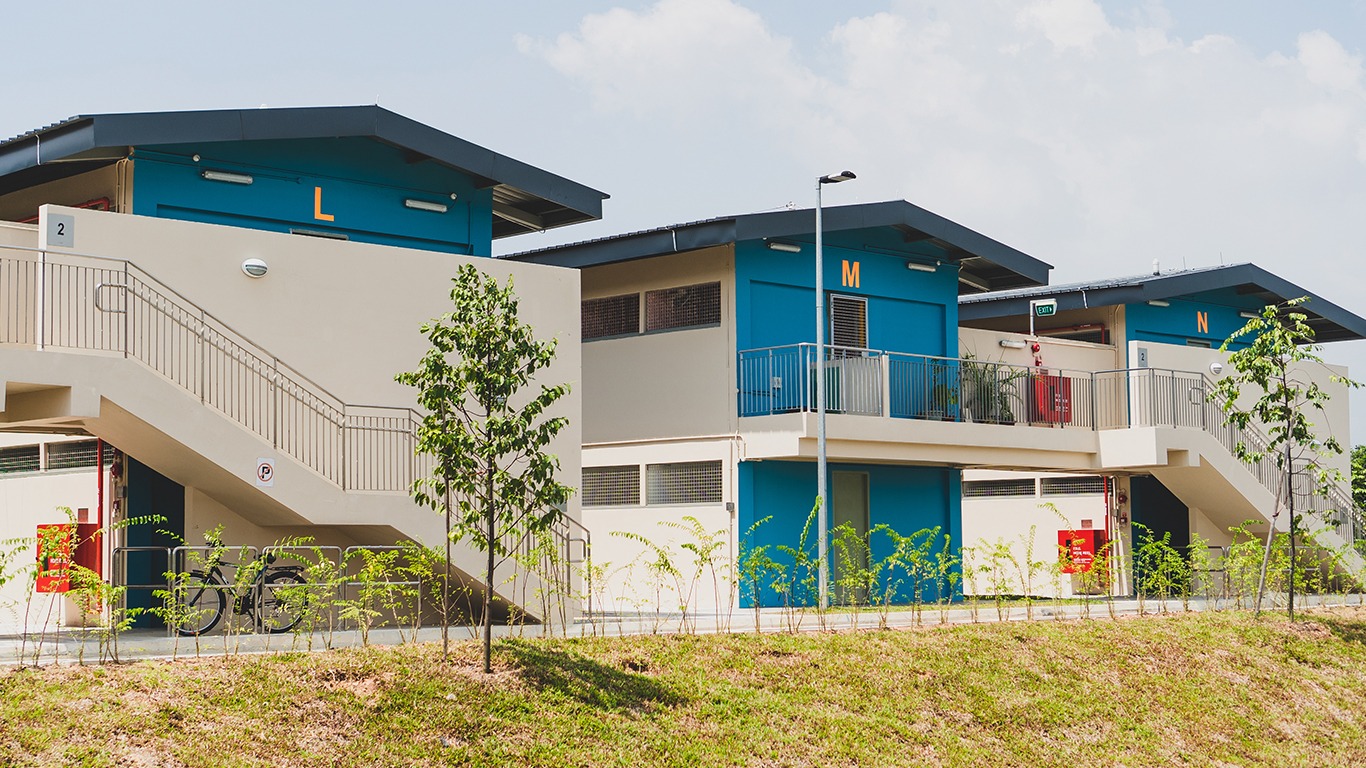
There are problems, though: Rent now is double what the shelters used to pay, even though the space is less than half of what they used to have.
But the biggest problem? Animal shelters are losing their volunteers, so man’s best friend is facing a manpower crunch.
Other stories you might like
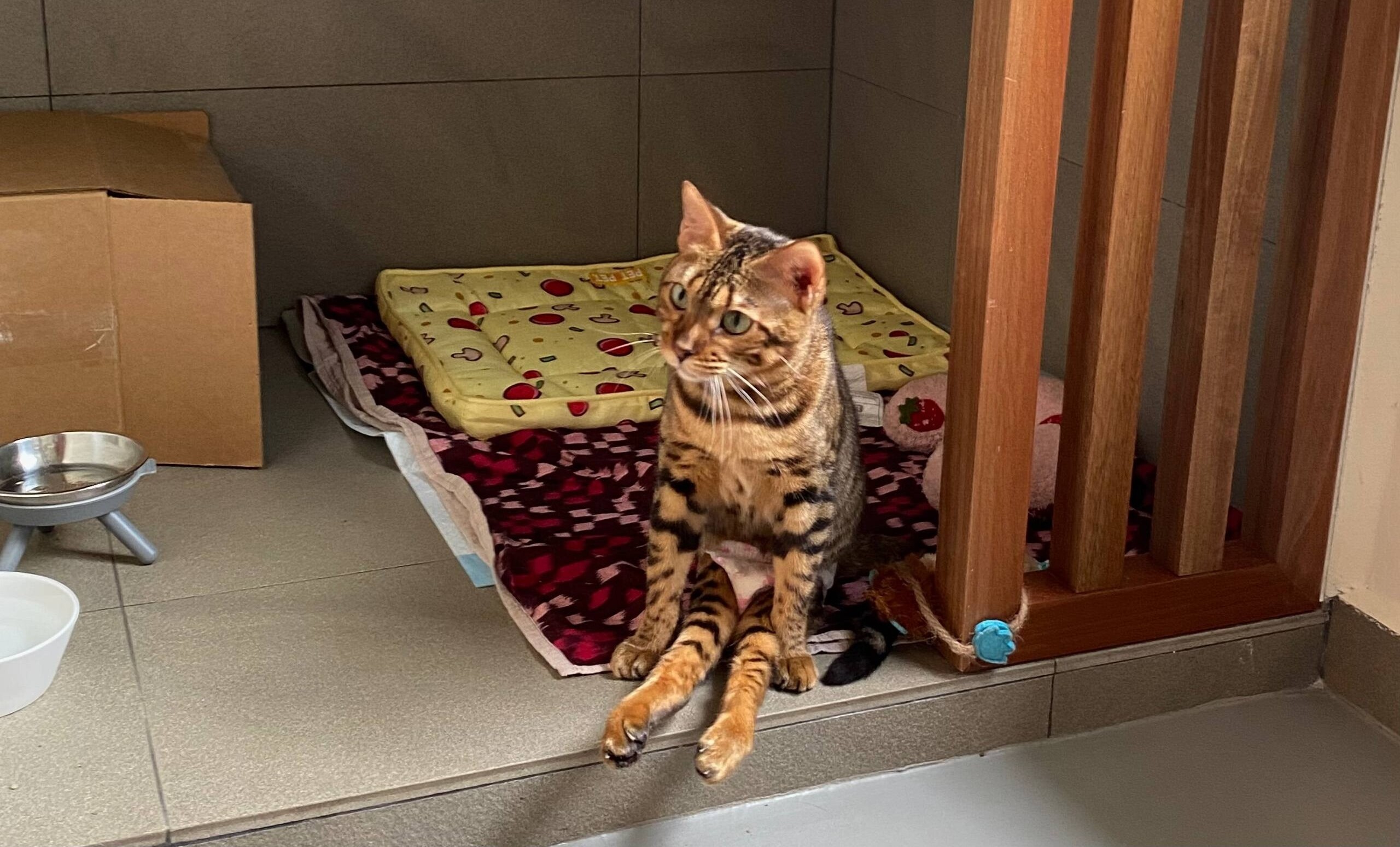


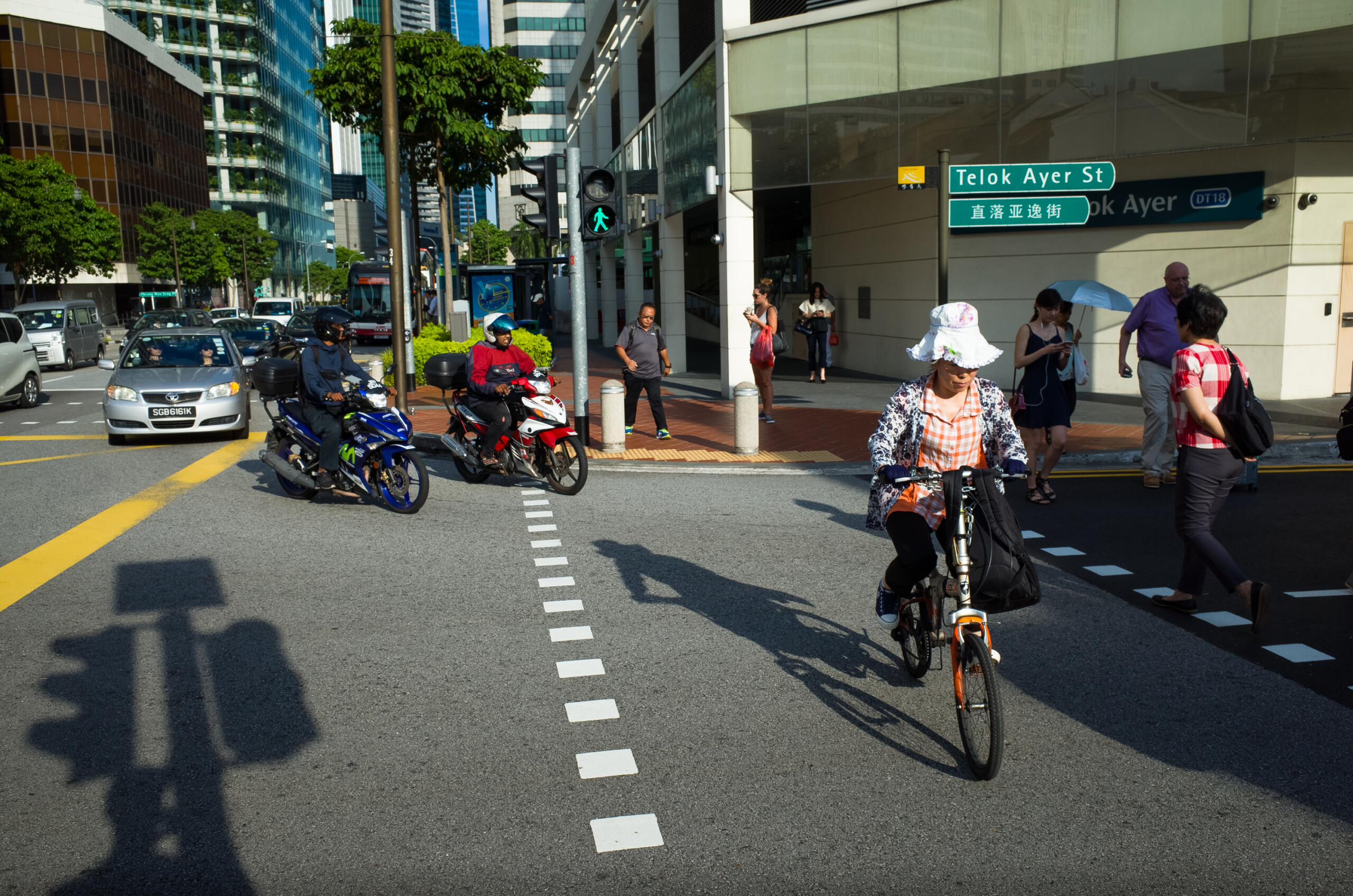
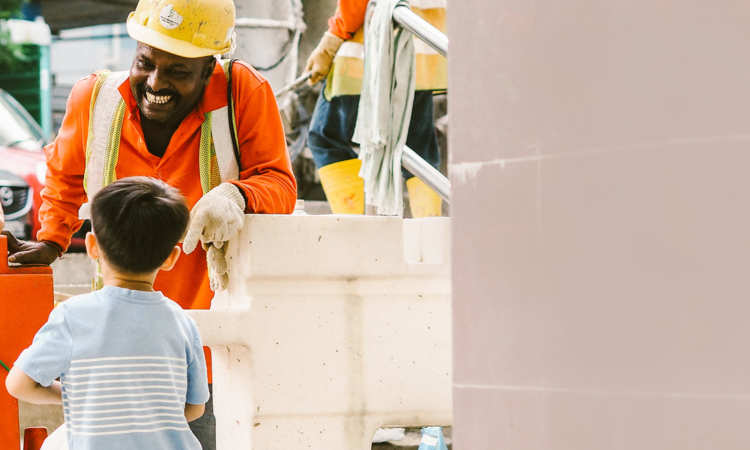

Besides the shortage of people willing to work full-time with a welfare group, the move to the western part of Singapore means welfare groups like Oasis Second Chance Animal Shelter (OSCAS), which used to be based in Pasir Ris, are losing their eastern-based volunteers.
Man’s best friend facing a manpower crunch
OSCAS now occupies five units within The Animal Lodge and needs at least two workers to manage their premises.
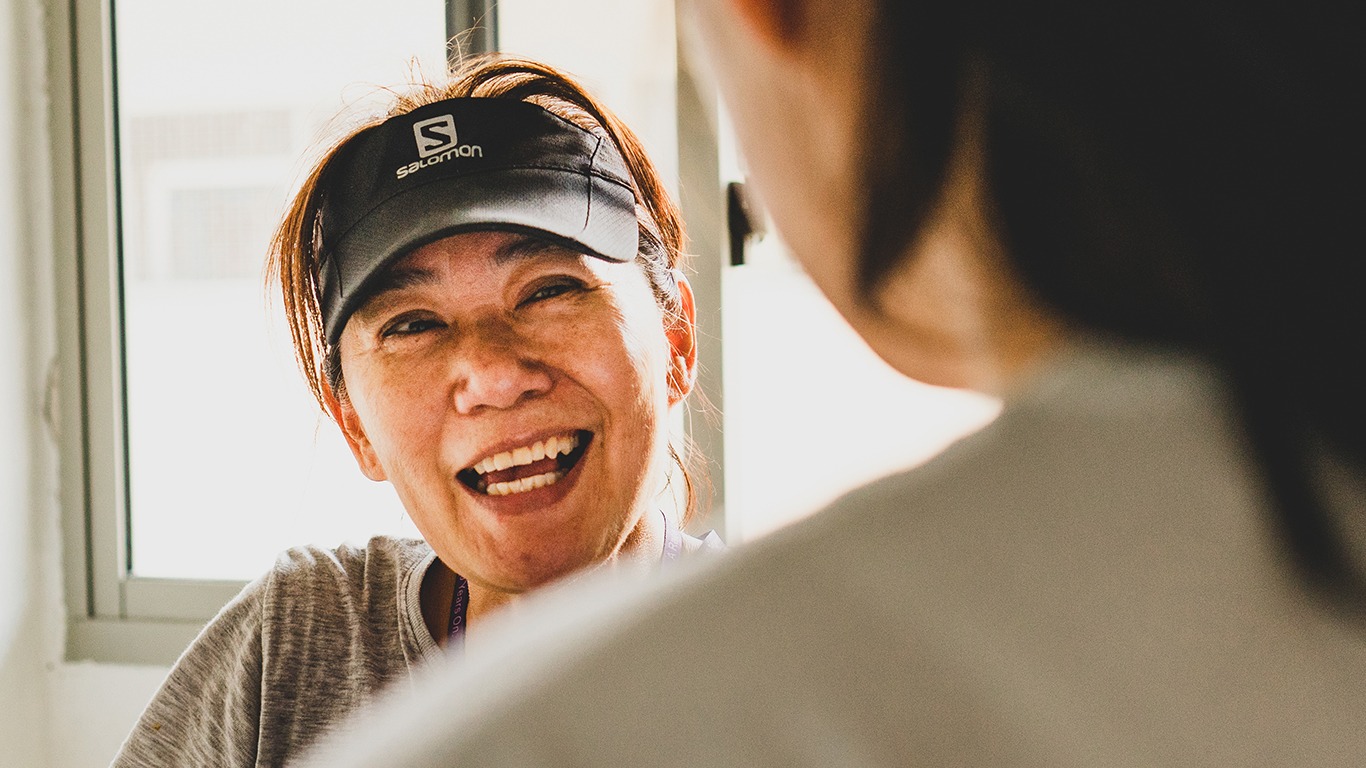
Co-founder Anita Paul, in her 40s, told The Pride that they’ve struggled to find full-time staff. Currently, she is the only full-time employee there.
“Unlike commercial players, charity groups do not qualify to apply for the employment of foreign workers,” she said. “However, it’s hard to find full-time Singaporean staff willing to do the dirty work – and there is a lot of dirty work.”
And how much are staff paid to do this dirty work?
“$13 an hour, or about $2,100 a month,” she replied.
In her old job as a nurse, which requires at least a diploma, Paul earned $16 to $18 an hour.
“The majority of animal welfare groups cannot afford to employ local workers in view of the high salaries and attendant legal employment terms,” she explained.
“We are trying to get a permit so we can employ foreign workers. We’ve appealed to the Agri-Food and Veterinary Authority of Singapore (AVA) for help but there is not much they can do other than write in to support our appeal.
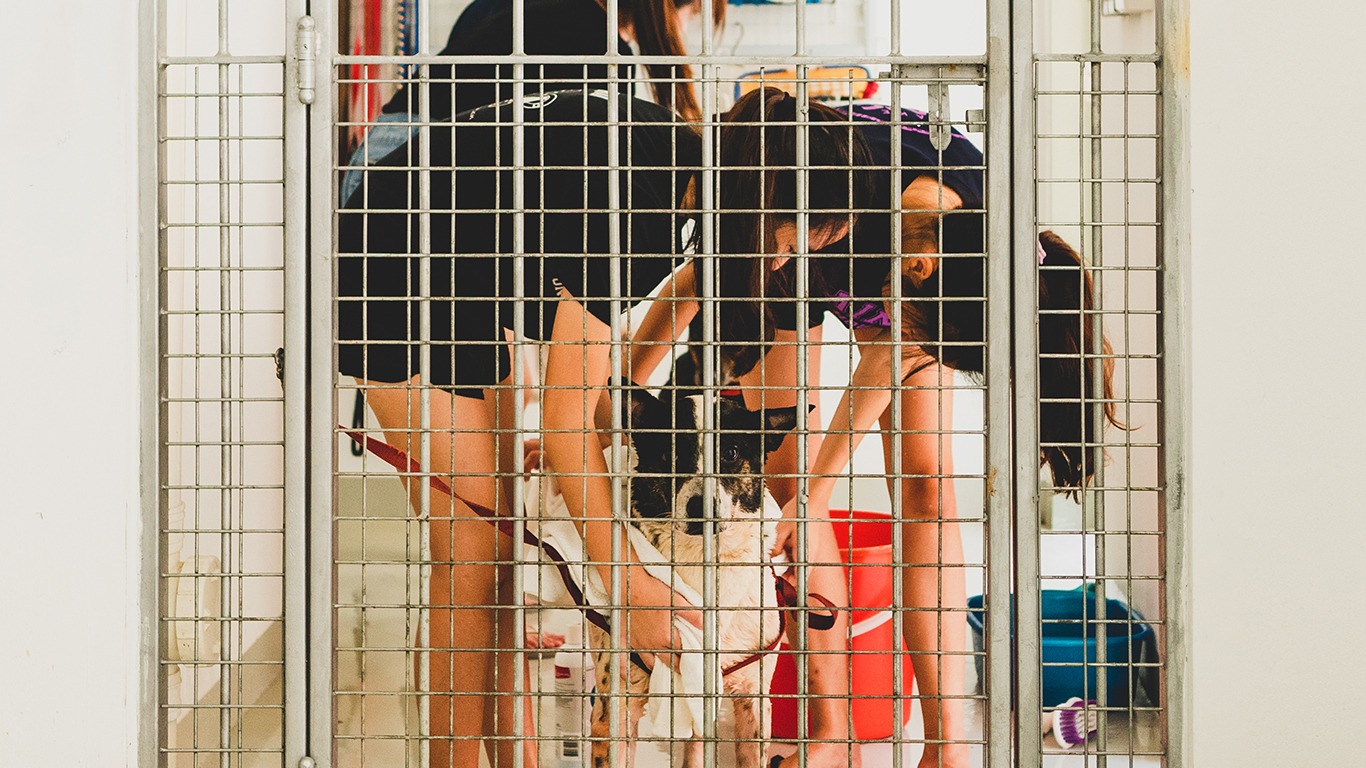
“In the meantime, my staff and I pick up the slack – I work almost 12 hours a day, every day.”
To ease that manpower crunch, most animal welfare groups depend on volunteers.
For three years, Gerard Yeo, 26, has helped care for and rehome the dogs at Oasis Second Chance Animal Shelter (OSCAS).
An animal lover, the National University of Singapore student has always dreamt of helping dogs. As OSCAS’s head of animal welfare, he works with about 30 other volunteers to oversee the welfare of over 100 rescue dogs.
“Many of our volunteers are students,” Yeo reveals. “And during their exam periods, we definitely see a drop in the number of volunteers, and in the amount of time they are able to spend at the shelter.”
Yvonette Shayne De Silva, 18, a student from Nanyang Polytechnic, recently started volunteering with OSCAS.
“I love dogs, but my parents are scared of them. I wish I had more time to spend at the shelter!” she laughs, as Salt, a fluffy black dog, shakes off as we bathe him.
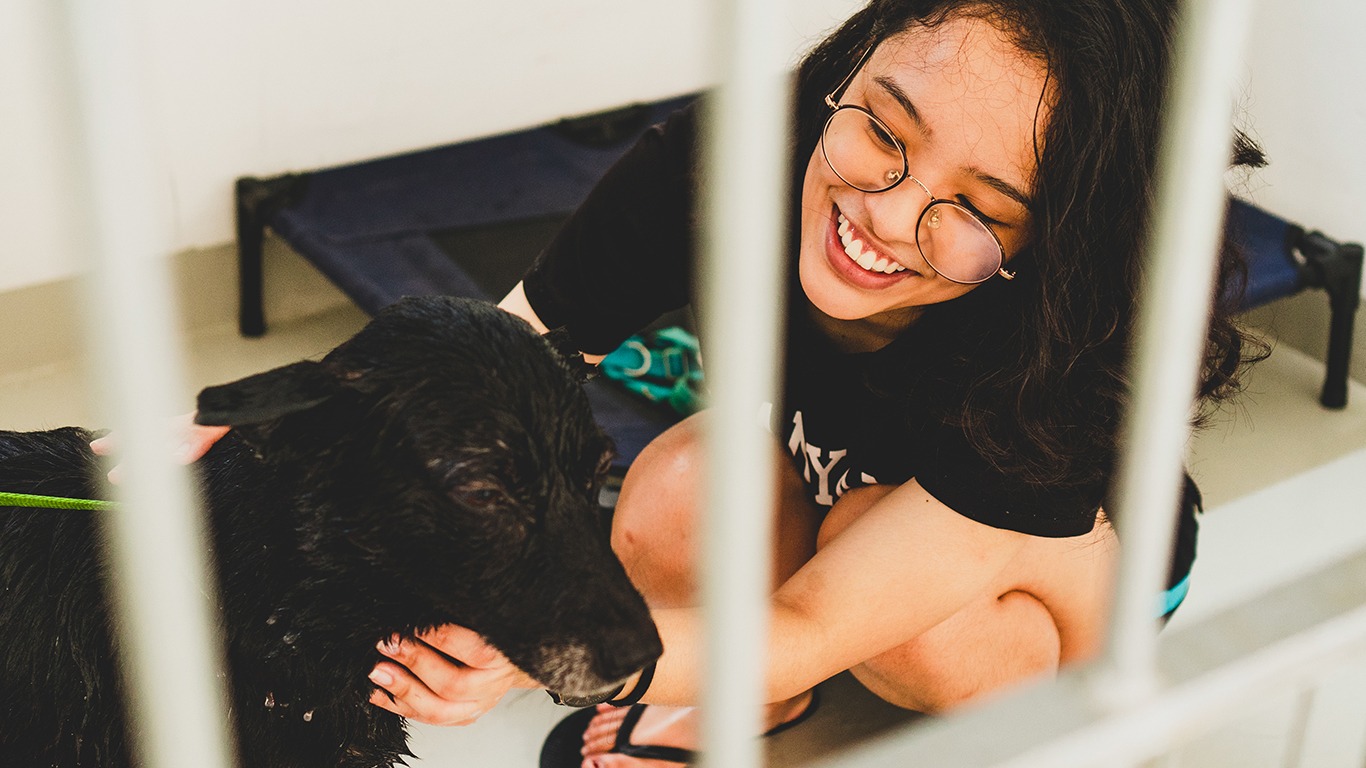
Ulu location has affected volunteer numbers
Since their move to the Animal Lodge, OSCAS has seen its volunteer numbers take a hit. This is because volunteers are faced with long, and at times expensive, commutes.
For Yvonette, a round trip to the shelter takes about three hours, and includes a 30-minute walk to and from the shelter.
Another volunteer, Erin Tan, 18, a second-year junior college student, has been volunteering every Saturday since March this year. It takes her two hours to get to the shelter, where she stays until 6 or 7pm, and then another two hours to get home. “The commute is more than worth it,” she says shyly, while walking one of OSCAS’s dogs.
New Zealander Theresa Saachi, 45 is part of a small group of expats who volunteer twice or thrice weekly. She goes to the shelter on Wednesday mornings and on weekends.
“It costs me over $20 per taxi ride here,” she said. “But usually, I’ll take the train until Choa Chu Kang (the nearest MRT station) and then carpool with another volunteer who has a car, to the shelter.”
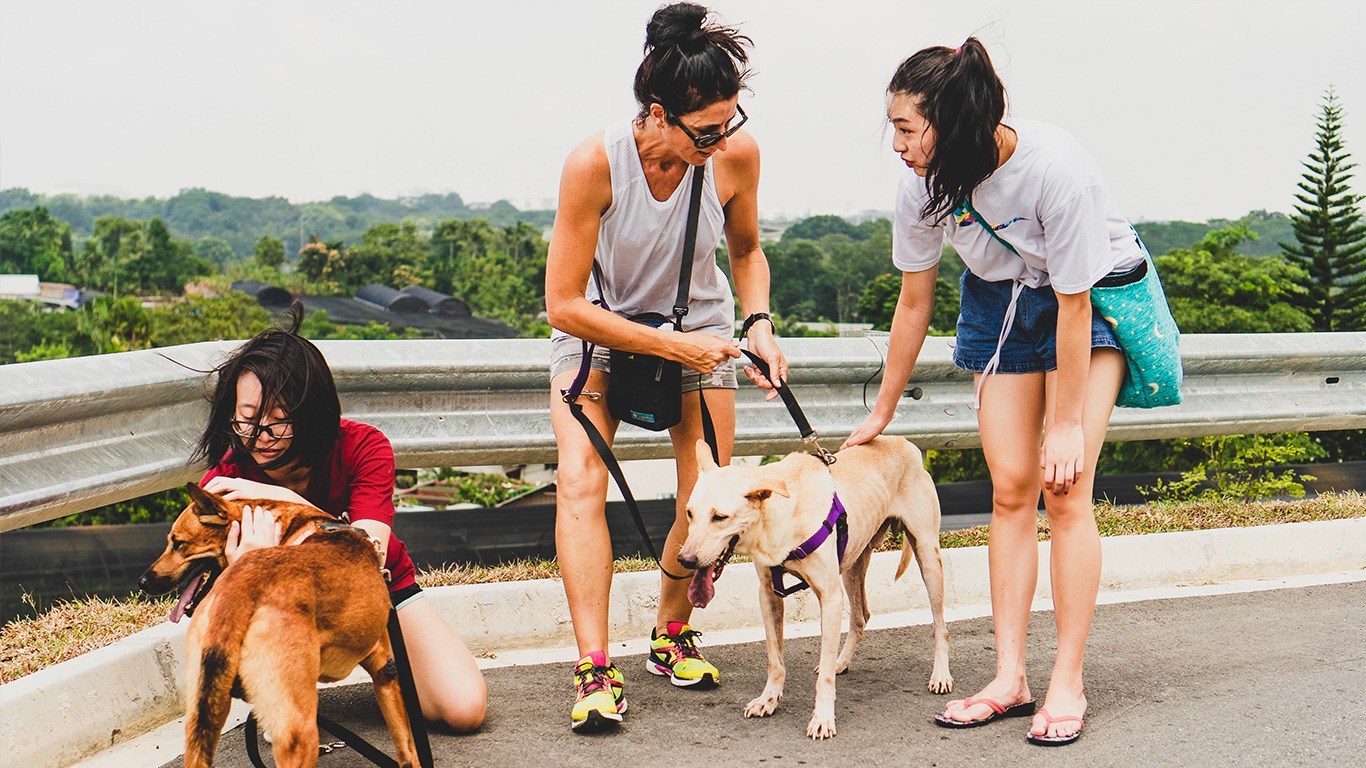
While Tan considers the commute “worth it” and Saachi has found a less expensive option to get to the shelter, the challenge of getting volunteers is exacerbated by how inconvenient the new location is.
In its old location at 16 Pasir Ris Farmway, OSCAS was a relatively accessible 800 metres – a walk of less than 10 minutes – from the nearest bus-stop. In contrast, the new Animal Lodge is located 1.5km – almost double the distance – from the nearest bus-stop.
According to Mary Soo, chairman of OSCAS, most of the group’s current committed volunteers are from the east, near to their previous location in Pasir Ris. The move to Sungei Tengah – practically on the opposite end of Singapore – means fewer of them are able to put up with the long commute, she said in the OSCAS newsletter.
“There is already a noticeable reduction in the number of regular volunteers,” she added.
Even those who drive are hit with a parking fee – $1.20 per hour – compared to the free parking at their old location.
Aside from the transport woes that volunteers face, there are no convenience stores or cafes within the complex or nearby, and there isn’t even a single vending machine or a water cooler on site.
Rental increase: 92%, space reduction: 91%
Every month, OSCAS forks out $13,650 in rental and utility bills – an increase of $6,000, or 92 per cent – from their old location. This money does not include wages, veterinary bills and food.
The 92 per cent rise in rental cost does not reflect on the size of the new shelters and enclosures – or more accurately, the lack thereof.
The issue of space was first highlighted by Save Our Street Dogs Singapore (SOSD), in their 2017 Facebook post.
SOSD highlighted how the dogs were being moved from a “kampung” style space, abundant at 5,000 sq metres, to more tightly packed units – about 450 sq metres, or a 91 per cent reduction in space.
This means that the dogs, many as tall as 50 cm and as heavy as 25kg, are kept in tight, concrete spaces that have poor ventilation and little sunlight.
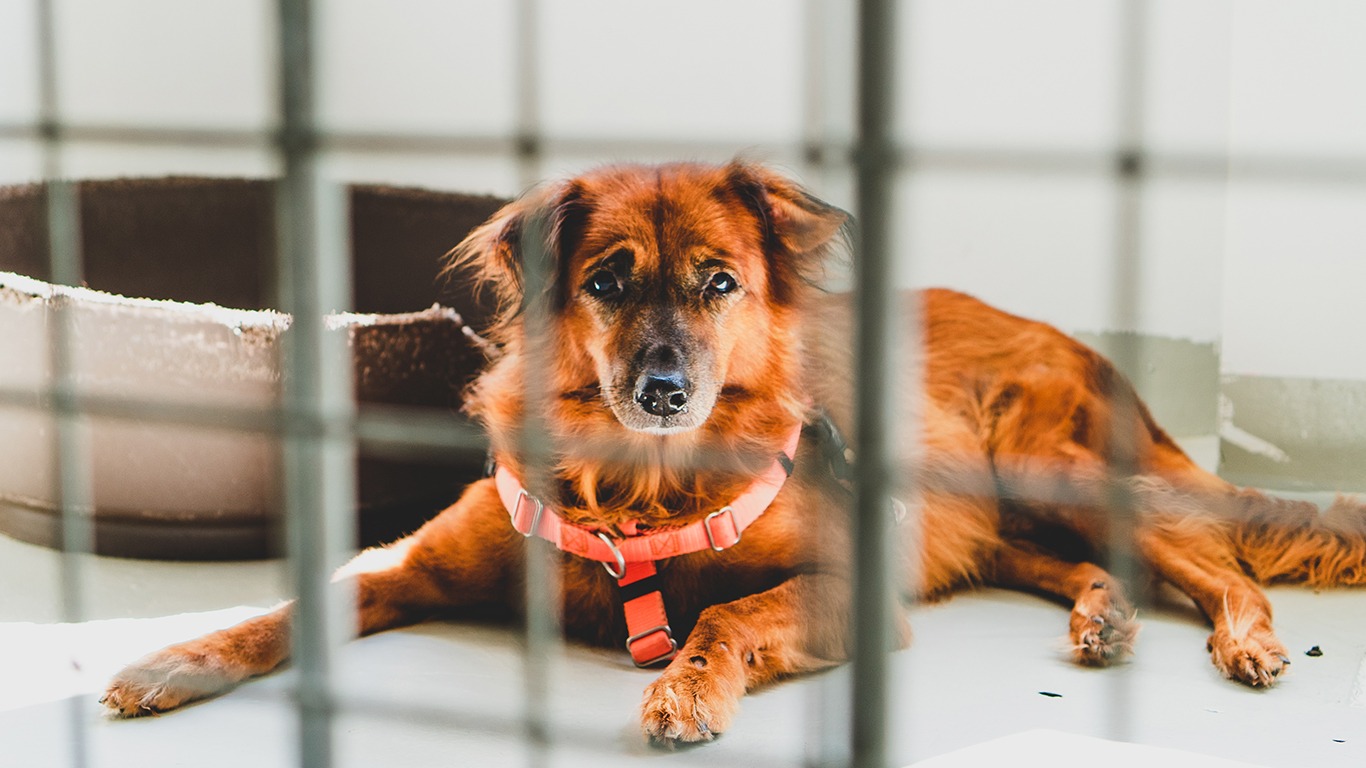
“It’s sheltered here so it’s more difficult to wash (the enclosures), as opposed to the open concept in Pasir Ris,” said a representative of another animal welfare group, who declined to be named, to TODAYonline.
Speaking to The Straits Times, Ms Malina Tjchin, 53, general manager of SOSD, likened the move to that of “moving from a kampung to a HDB unit”.
As a not-for-profit organisation, OSCAS relies heavily on the goodwill of others. There are some months when their monetary requirements cannot be met.
This sensitivity to fluctuations in funding is something all animal welfare groups face. And unfortunately, a drop in donations means full-time staff feel the pinch.
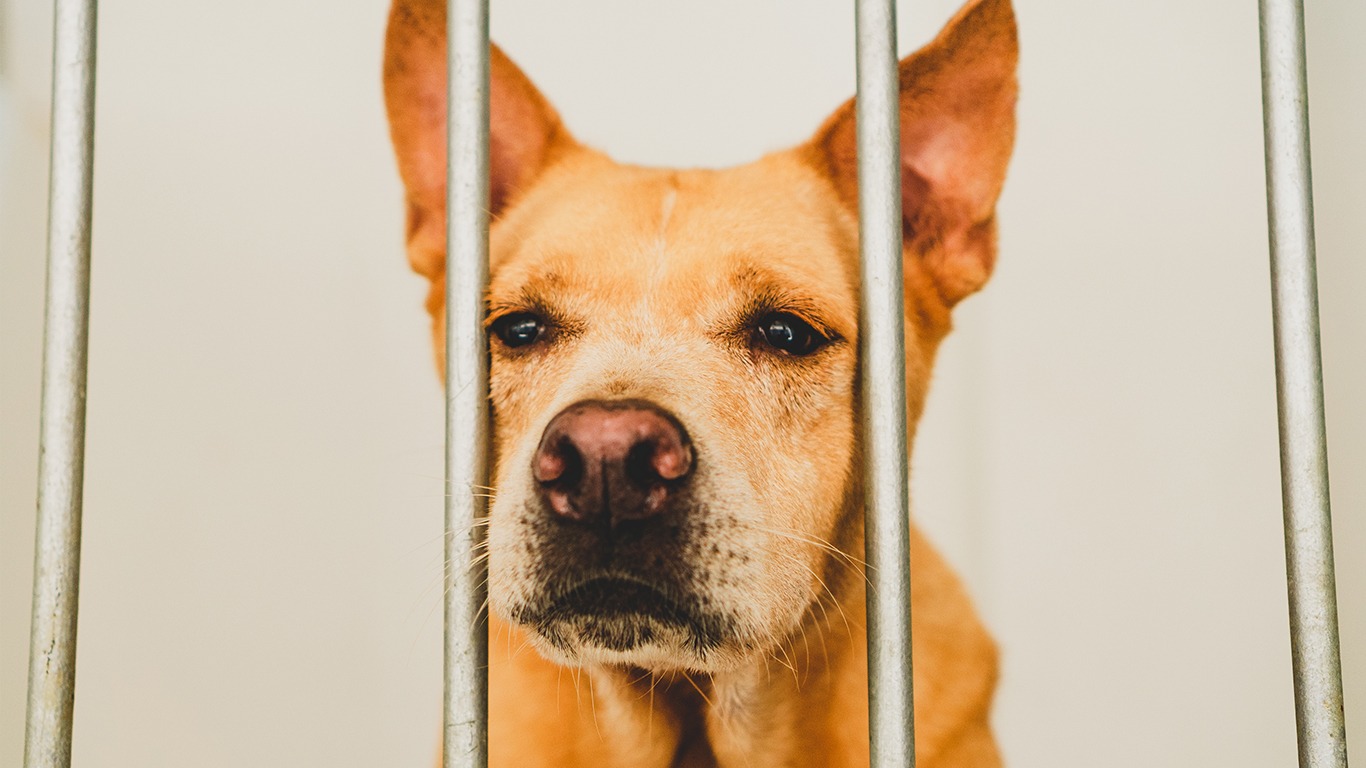
The inaccessibility and extremely high additional costs are threatening the ability of animal welfare groups like OSCAS to stay open. Soo added that OSCAS is in critical state now, and their 13 years of hard work may soon be shattered.
They rely solely on the kindness of strangers’ hearts for almost everything – volunteers, monetary donations, dog beds, food and treats, cleaning supplies and tip-offs when a dog is being abused.
And right now, they are in desperate need of your kindness.
So lend a hand, and save a paw. Donate to OSCAS here, or sign up to be a volunteer.
